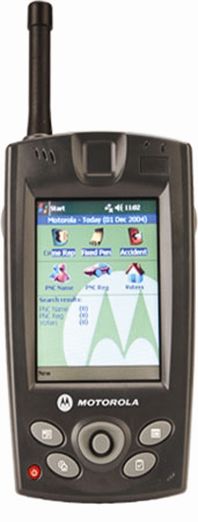A better way to manage your digital evidence
Evidence to support the use of body-worn video (BWV) cameras by police officers is overwhelming. In the most recent study analysing their use, the San Diego Police Department in the US says the use of BWV cameras has led to fewer complaints by residents and less use of force by officers.

Evidence to support the use of body-worn video (BWV) cameras by police officers is overwhelming. In the most recent study analysing their use, the San Diego Police Department in the US says the use of BWV cameras has led to fewer complaints by residents and less use of force by officers.
The report, compiled by the police department for the city councils public safety and livable neighbourhoods committee, showed that complaints fell 41 per cent, total allegations were reduced by 60 per cent and use of personal body force by officers dropped by 47 per cent. The use of pepper spray also reduced by 31 per cent. The results from this study reflect comparisons to prior periods in which BWV cameras were not deployed.
The San Diego Police Department currently deploys 600 Axon BWV and flex cameras from TASER International to its police officers and uses TASERs cloud-based platform, EVIDENCE.com, to store and manage the data from the cameras and other digital devices. The department plans to have nearly 1,000 officers, including patrol officers, gang-unit officers and motorcycle officers, equipped with body cameras by the end of 2015.
The body cameras have proven to be a positive game-changer for our department and the San Diego community, says San Diego Police Chief Shelley Zimmerman. We find the cameras to be a win-win for our officers and citizens and we look forward to continued success with our BWV programme here in San Diego.
Rick Smith, chief executive officer and founder of TASER International, said: This is meaningful data from a large-scale deployment of body-worn cameras in a major city and we are very encouraged by the positive results and significant impact the cameras have shown to have on a police force and community.
We hope the results from this study will help guide other cities, counties and law enforcement agencies who are considering updating their technology to help improve transparency and community relations.
Similar body-worn camera studies have been conducted at other US police departments, including one by the University of Cambridge at the California Rialto Police Department that showed an 88 per cent reduction in citizen complaints and a 60 per cent reduction in use of force, while another study by Arizona State University at the Mesa Police Department in Arizona revealed a 48 per cent reduction in citizen complaints and a 75 per cent fall in use of force complaints.
Yet while BWV cameras provide irrefutable video evidence and have been proven to give dramatic reductions in use-of-force and complaints against police officers, there are concerns that in order for BWV cameras to deliver on their full potential, law enforcement agencies must grapple with a substantial increase in the amount of video footage that needs to be processed, stored and accessed for both internal and external use.
When Dr Barak Ariel and Dr Alex Sutherland from the University of Cambridges Institute of Criminology published the results of their widely-cited US experiment on BWV The Effect of Police Body-Worn Cameras on Use of Force and Citizens Complaints Against the Police: A Randomised Controlled Trial conducted alongside Rialto police chief Tony Farrar in 2012, they noted that the sheer levels of data storage required as the cameras are increasingly adopted has the potential to become crippling.
The velocity and volume of data accumulating in police departments even if only a fraction of recorded events turn into downloadable recordings for evidentiary purposes will exponentially grow over time, said Dr Ariel. User licences, storage space, security costs, maintenance and system upgrades can potentially translate into billions of dollars worldwide.
However, Taser International says its cloud-based platform EVIDENCE.com allows police forces to take control of their digital evidence with a simple plug and go workflow, groundbreaking security of evidence and a bullet-proof chain of custody.
The shift to digital and video evidence should result in increased


